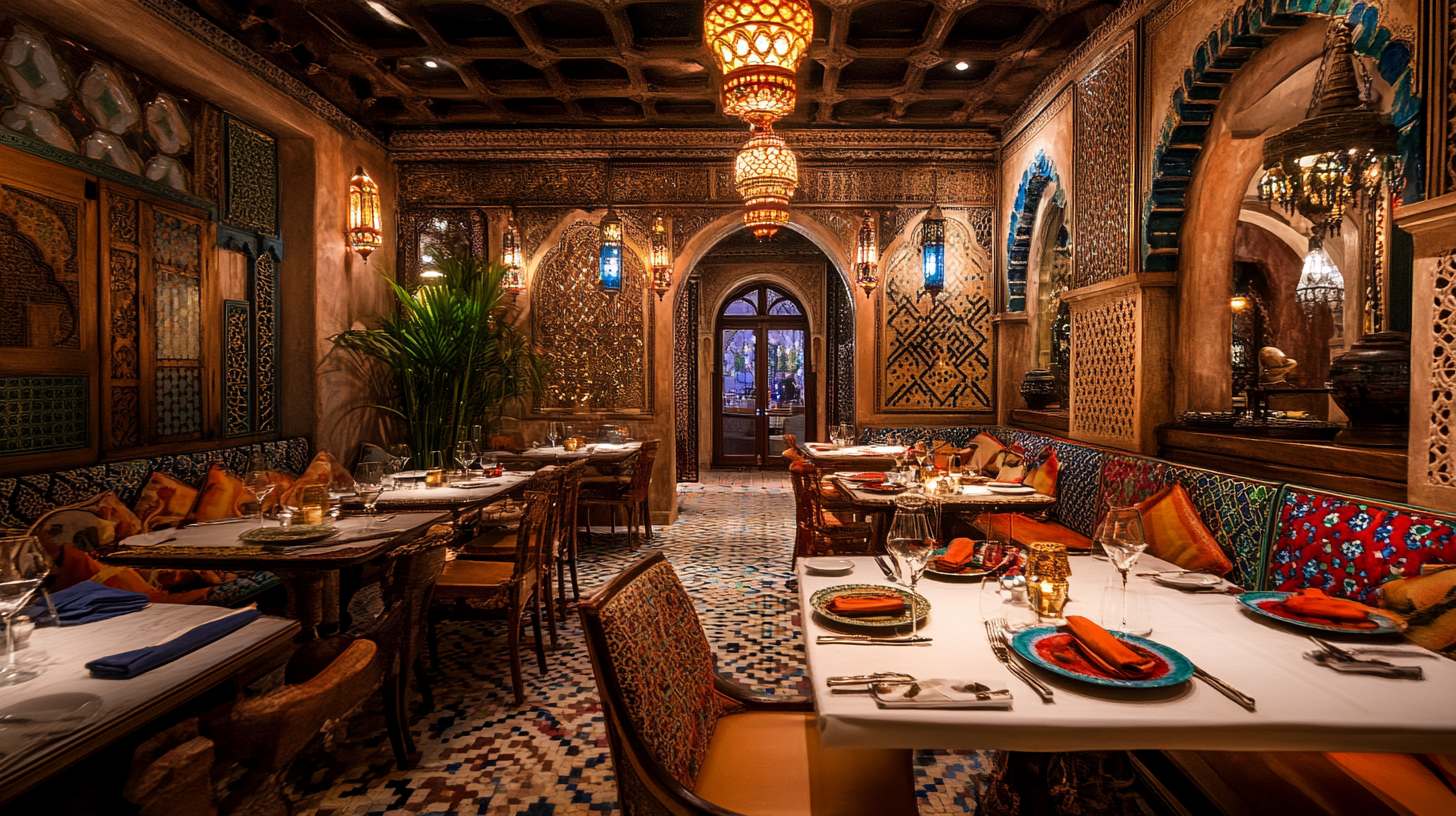- Published on
The Evolution of Moroccan Cuisine From Street Food to Fine Dining
- Authors

- Name
- Adil ABBADI
Introduction
Moroccan cuisine, with its rich aromas, vibrant colors, and diverse flavors, has undergone a remarkable evolution over the years. From its humble beginnings as street food to its current status as a sought-after fine dining experience, Moroccan cuisine has successfully navigated the changing culinary landscape while remaining true to its cultural roots. In this blog, we'll delve into the fascinating history of Moroccan cuisine, highlighting its transformation and the key factors that have contributed to its growth.
- The Humble Beginnings of Street Food
- The Influence of Foreign Cultures
- The Rise of Fine Dining
- The Role of Spices and Ingredients
- Preserving Tradition
- The Future of Moroccan Cuisine
- Conclusion
- Taste the Tradition
The Humble Beginnings of Street Food
Moroccan cuisine has its roots in the bustling streets of Marrakech, Fez, and other ancient cities. Street food, or "snack food," played a significant role in the daily lives of Moroccans, providing quick, affordable, and flavorful meals for the working class. Popular street food items like msemen (a folded pancake filled with meat, onions, and spices), b'stilla (a savory meat pie), and khubz (a crusty bread) were staples of Moroccan cuisine.

The Influence of Foreign Cultures
Morocco's strategic location at the crossroads of Africa, Europe, and the Middle East made it a melting pot of cultures. The arrival of Arab, Berber, French, and Spanish influences significantly impacted Moroccan cuisine. The introduction of new ingredients, cooking techniques, and dishes enriched the local culinary landscape. Harrira (a hearty soup), tagine (a slow-cooked stew), and pastilla (a meat pie) are examples of dishes that showcase the blending of cultural flavors.
The Rise of Fine Dining
As Moroccan cuisine gained popularity worldwide, fine dining restaurants began to emerge, offering a more sophisticated and modern take on traditional dishes. Chefs like Ferran Adrià and Yotam Ottolenghi helped raise the profile of Moroccan cuisine, experimenting with innovative flavor combinations and presentation styles. Restaurants like Al Fassia in Marrakech and Marrakech Palace in London set new standards for fine dining, offering elevated versions of classic Moroccan dishes.

The Role of Spices and Ingredients
Moroccan cuisine is renowned for its bold flavors, which are largely attributed to the liberal use of aromatic spices and ingredients. Ras el hanout, a blend of over 30 spices, is a staple in Moroccan cooking. Other essential ingredients include preserved lemons, olive oil, cumin, coriander, and ginger. The skillful combination of these ingredients has enabled Moroccan cuisine to maintain its unique flavor profile.

Preserving Tradition
Despite the evolution of Moroccan cuisine, traditional cooking methods and recipes have been preserved with care. Family recipes are passed down through generations, and ** Dar Zitoun**, a culinary school in Marrakech, works to promote and preserve Moroccan culinary heritage.
The Future of Moroccan Cuisine
As Moroccan cuisine continues to evolve, it's exciting to see modern twists on traditional dishes. The increasing popularity of vegan and gluten-free options has led to innovative creations like vegan tagines and gluten-free b'stilla. The fusion of Moroccan flavors with international cuisines, such as Moroccan-Japanese fusion, is also gaining popularity.

Conclusion
The evolution of Moroccan cuisine is a testament to the country's rich cultural heritage and its ability to adapt to changing culinary trends. From humble street food origins to modern fine dining experiences, Moroccan cuisine has retained its essence while embracing innovation. As we look to the future, it's clear that Moroccan cuisine will continue to delight and inspire palates around the world.
Taste the Tradition
Experience the authentic flavors of Morocco by exploring traditional recipes, visiting local markets, and savoring the cuisine in its finest form. Join the culinary journey and discover the timeless appeal of Moroccan cuisine.
